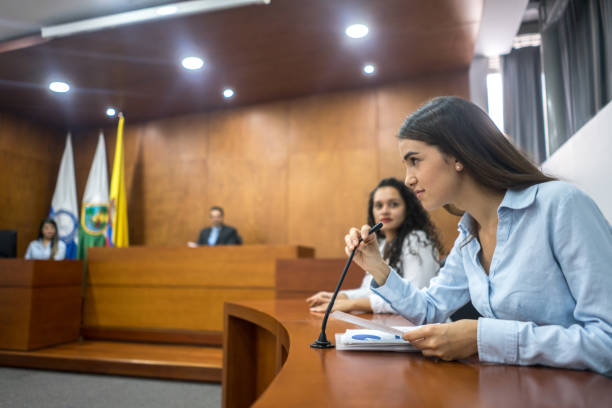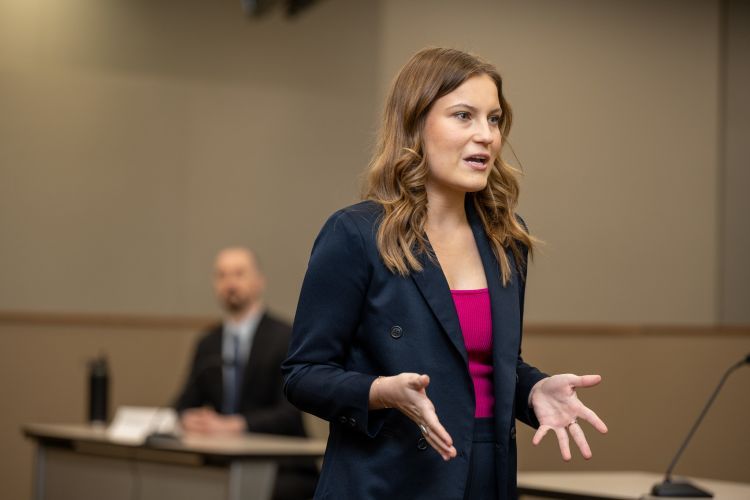Navigating Complex Cases: How to Develop Effective Trial Presentations for Optimal Results
Browsing the Complexities of Test Presentations: Tips for Seamless Delivery and Engaging Disagreements
In the realm of lawful process, the art of test presentation stands as a vital component of success. The intricacies inherent in trial presentations need a delicate equilibrium of technique, skill, and finesse.

Understanding Test Purposes
To effectively navigate a test, it is critical to have a clear understanding of the objectives that need to be attained. Prior to entering the court, lawful groups have to define their goals and preferred results. These purposes function as guiding principles throughout the trial, shaping methods and influencing decision-making procedures.
Understanding trial objectives involves a detailed evaluation of the situation, lawful criteria, and the customer's benefits. Trial Presentations. It calls for a meticulous examination of the facts, identifying essential issues, and anticipating prospective challenges. By setting measurable and specific goals, lawyers can customize their debates and discussions to align with the desired results
Furthermore, a clear grasp of trial purposes makes it possible for lawful teams to prioritize evidence, witnesses, and lawful disagreements successfully. It enables the development of a coherent story that reverberates with the discretionary, reinforcing the total situation presentation.

Organizing Proof Properly
Having a clear understanding of trial purposes lays the structure for organizing proof efficiently in legal process. By lining up the discussion of evidence with the desired results of the trial, lawful teams can reinforce their disagreements and boost their persuasiveness.
One more key component in organizing proof efficiently is developing a rational circulation. Presenting proof in a meaningful and consecutive manner can aid develop an engaging narrative that sustains the legal disagreements being made. Additionally, utilizing aesthetic aids such as graphes, graphs, or timelines can better enhance the company of proof and assist in clearing up intricate connections or series of occasions.
Additionally, making certain that all evidence provided is relevant and acceptable to the instance is important. Inadmissible or irrelevant evidence can interfere with the toughness of the debate and potentially harm the integrity of today party. As a result, a careful testimonial and selection process ought to be embarked on to consist of just one of the most impactful and legally sound evidence in the trial presentation.
Crafting Convincing Stories
Crafting engaging narratives plays an essential duty in providing persuasive debates during lawful procedures. When constructing a narrative for a trial presentation, it is crucial to establish a clear storyline that highlights key factors and connects them in a coherent way. By weaving with each other evidence, testament, and lawful disagreements into a influential and cohesive story, legal experts can efficiently support for their clients and raise the possibility of a desirable result in the court room.
Grasping Aesthetic Aids
Efficient use visual help is vital to improving the influence and clarity of trial discussions. Visual aids, when used purposefully, have more helpful hints the power to simplify complicated details, reinforce bottom lines, and leave a long lasting perception on the court and jury. To master aesthetic help in test presentations, it is important to make certain that they are clear, concise, and appropriate to the disagreements being made.
When including aesthetic aids, such as charts, timelines, graphs, or photos, into a trial presentation, it is necessary to maintain them aesthetically appealing yet specialist. The visuals should complement the verbal arguments, offering a graph of the info being gone over without frustrating the target market with unneeded information.
In addition, experimenting the aesthetic help ahead of time is imperative to ensure a seamless delivery during the test. Acquainting oneself with the web content, shifts, and timings of each aesthetic aid can assist maintain the flow of the discussion and protect against technological problems that might browse around here occur.
Providing Impactful Closing Arguments
A compelling closing argument functions as the end result of a test presentation, encapsulating the core story and encouraging the discretionary in the direction of a desirable choice. To deliver an impactful closing disagreement, it is vital to succinctly wrap up essential points, highlight the toughness of your situation, and deal with any weak points in a calculated way. Begin by outlining the major disagreements that support your customer's setting, emphasizing why the proof provided throughout the trial sustains your narrative. It is essential to develop a sense of communication and clearness, directing the discretionary in the direction of the preferred conclusion. click for source
In addition, incorporating emotional allure can further enhance your closing debate. Ultimately, a well-crafted closing debate should leave a long-term impact, engaging the court and court to rule in your client's support.
Final Thought
Finally, understanding trial presentations involves understanding goals, organizing evidence, crafting narratives, using visual aids, and providing impactful closing disagreements. By carrying out these methods properly, legal representatives can offer their instance flawlessly and make engaging debates in the court room. It is critical to browse the intricacies of test presentations with precision and skill to attain success in lawful process.
By lining up the presentation of evidence with the desired outcomes of the test, lawful teams can strengthen their arguments and boost their persuasiveness (Trial Presentations). To understand visual aids in trial discussions, it is vital to make sure that they are clear, concise, and relevant to the debates being made
An engaging closing disagreement serves as the end result of a test presentation, enveloping the core story and persuading the court and court towards a favorable choice. Begin by describing the main debates that sustain your client's placement, highlighting why the evidence offered throughout the trial sustains your narrative.In conclusion, understanding trial discussions includes understanding goals, organizing proof, crafting narratives, making use of visual help, and providing impactful closing debates.